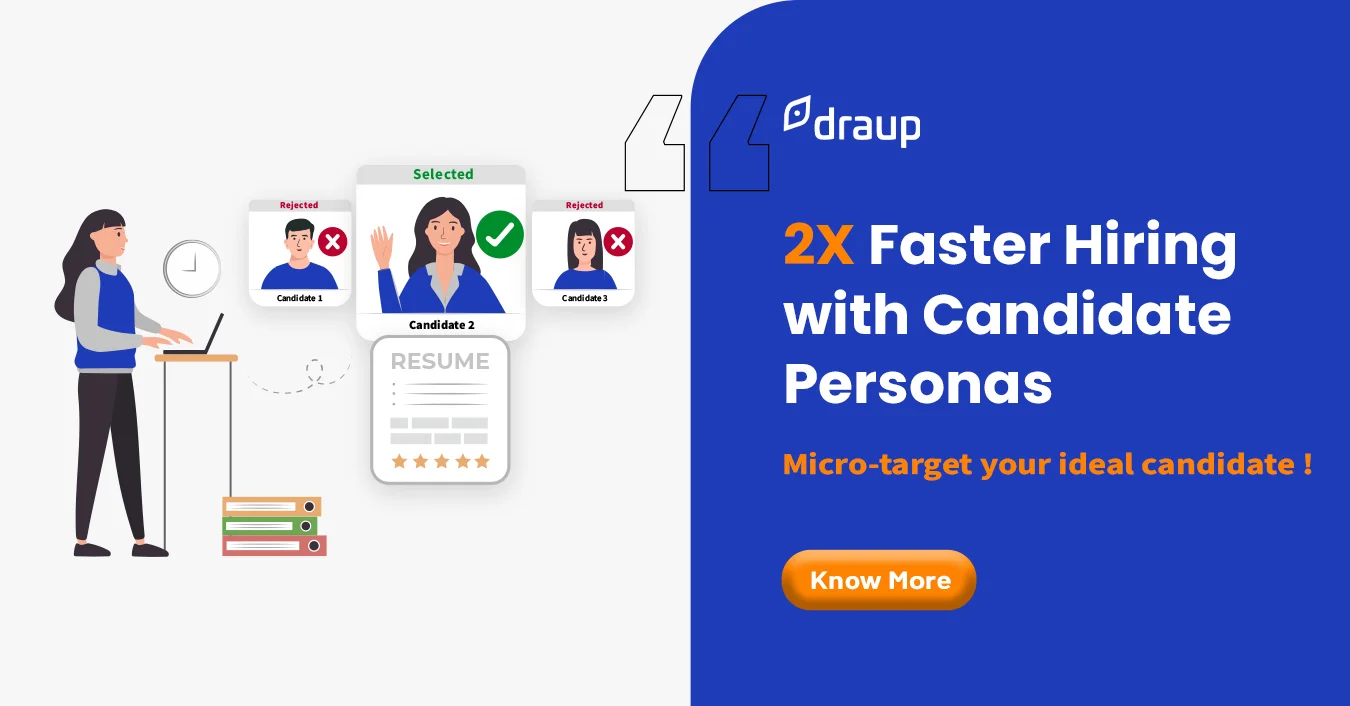Every job posting has a unique set of qualifications that candidates must possess. But how can you be certain that you’re attracting and targeting suitable candidates when your basic job description isn’t enough? And perhaps more crucially, how can you ensure a quality hire if you don’t know what your ideal candidate looks like?
Fortunately, you can locate, target, and fill your talent pipeline with the most qualified applicants using candidate personas, an integral part of Effective Talent Sourcing.
A candidate persona is an imagined portrait of the ideal applicant. It is created using conventional hiring data, such as work history, skills, and education. After that, it looks beyond basic resume data to consider other, less obvious qualities that might make someone the ideal employee. Career goals, character traits, and employment preferences are frequently included.
Candidate personas can help recruiters:
- Write tailored job descriptions
- Source passive candidates
- Build an employer brand
- Reduce Time-to-hire
- Arrest employee attrition
- And much more!
Creating Effective Candidate Personas
Making impactful candidate personas takes a lot of time, but if you are prepared, it is not a difficult process. It only takes three steps to create a persona: gather your data, analyze it, and then construct your final profile.
Gathering the Data
The data collection process necessitates two things: a careful examination of prior hires and interviews with current employees, regardless of whether you work as an internal recruiter for a single company or a consultant for numerous businesses.
The objective is to compile as much information as possible about the particular position or job opening. In order to gather anecdotal evidence about Sales Executives, for instance, if you’re hiring an entry-level sales exec, you should collect the resumes of all such roles you’ve previously hired or placed, speak with professionals who are currently in the job and talk to other recruiters.
Here are the types of data you need to gather:
Demographics: Age, location, current job title, income, etc.
Background: Work and academic history.
Skillsets: Any necessary or related knowledge, credentials, or education.
Personal Characteristics: Strengths, weaknesses, passions, motivations, fears, and more.
Goals: What type of career do they hope to develop? In five years, where do they want to be?
Objections: What would prevent them from wanting to work for an organization? What about a company’s reputation, values, or hiring practices would drive them away?
Web: Their online activities, such as their social networking, job-hunting sites, and leisure and entertainment websites.
Identifying Key Trends
You should now have a tonne of data at your disposal. At first, it will be overwhelming, but as you start to spot patterns and commonalities, your candidate personas should begin to take shape.
Note that this process requires much effort since finding patterns from scattered data is challenging. Try an AI-powered talent intelligence tool to gain a 360-degree perspective on individual candidates across 40+ parameters integrated with powerful insights.
However, if you prefer to do manual work, consider using these questions to identify themes in your research:
What qualities does the ideal candidate seek in a workplace?
- Where does the ideal applicant look for employment?
- Is the applicant employed right now? If so, at what kind of company?
- Do successful candidates exhibit any particular personality traits?
- What does the ideal candidate hope to accomplish in the next five years?
- The ideal candidate is driven by what?
- How does the applicant respond to pressure or demanding circumstances?
- What qualifications is the ideal candidate required to have?
- What non-related skills do successful hires have?
- How does the ideal applicant behave around others?
- Do they prefer to work alone or with a group of people?
The more specific you get with your trends and research, the more successful your candidate personas will be.
Create your Personas
After gathering and organizing your data, it’s time to start crafting your personas. Make a fictitious candidate using the common responses and themes you’ve identified.
Keep in mind that this is not a job description. It’s a sketch of what a perfect candidate might look like, but it’s adaptable. The job description will align with some of your persona’s traits, but not all of them.
Therefore, ensure that your personas represent real people, and don’t be afraid to be imaginative. Many businesses even give names and pictures to make their personas seem more three-dimensional and realistic.
You should develop a new candidate persona for each position that needs to be filled or for each new job opening. Over time, you’ll have a collection of personas to choose from, streamlining and streamlining your hiring procedure.
The language you use in your job description and the questions you ask during interviews should all be influenced by your candidate personas. Try to understand the thoughts of your ideal candidate so you can customize your recruiting efforts to suit them.
Talent intelligence platforms like Draup analyze and evaluate the underlying talent attributes across industries, individuals, and regions to help make accurate hiring decisions. Spanning over 4Mn+ career paths, 750Mn+ professional profiles, 30k+ skills, and 100k+ courses across 33 industries, Draup for Talent provides an Eagle’s eye view of the entire talent ecosystem.







